
Stafford County is a county located in the U.S. state of Kansas. Its county seat is St. John. As of the 2020 census, the county population was 4,072. The county is named in honor of Lewis Stafford, a captain of Company E, First Kansas Infantry, who died at the Battle of Young's Point during the American Civil War.

Sherman County is a county located in the U.S. state of Kansas. Its county seat is Goodland. As of the 2020 census, the county population was 5,927. Sherman County was created by the Legislature of 1873, and named after general William Sherman, a general during the American Civil War.
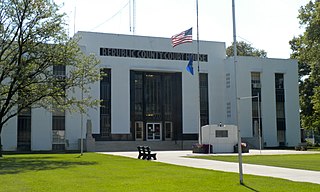
Republic County is a county located in the state of Kansas, south from the Nebraska state line. Its county seat and largest city is Belleville. As of the 2020 census, the county population was 4,674. The county was named after the Republican River.

Pratt County is a county located in the U.S. state of Kansas. Its county seat and largest city is Pratt. As of the 2020 census, the county population was 9,157. The county was named for Caleb Pratt, a U.S. soldier who died in the Battle of Wilson's Creek during the American Civil War and had previously been involved in Bleeding Kansas.

Miami County is a county located in east-central Kansas and is part of the Kansas City metropolitan area. Its county seat and most populous city is Paola. As of the 2020 census, the county population was 34,191. The county was named for the Miami tribe.

Cheyenne County is a county located in the northwest corner of the U.S. state of Kansas. Its county seat and most populous city is St. Francis. As of the 2020 census, the county population was 2,616. The county was named after the Cheyenne tribe.

Brown County is a county located in the northeast portion of the U.S. state of Kansas. Its county seat and most populous city is Hiawatha. As of the 2020 census, the county population was 9,508. The county was named after Albert G. Brown, a U.S. Senator from Mississippi and Kansas statehood advocate. The Kickapoo Indian Reservation of Kansas, the majority of the Sac and Fox Reservation, and the majority of the Iowa Reservation of Kansas and Nebraska are located within the county.
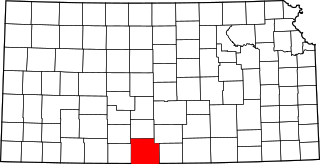
Barber County is a county located in the south-central portion of the U.S. state of Kansas. Its county seat and most populous city is Medicine Lodge. As of the 2020 census, the county population was 4,228. The county was named for Thomas Barber, an abolitionist who was killed in Douglas County in 1855 during the Wakarusa War.
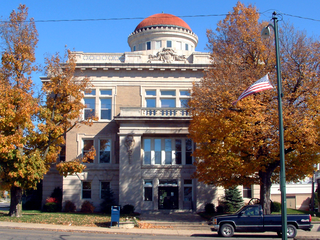
Warren County is a county in the U.S. state of Indiana. It lies in the western part of the state between the Illinois state line and the Wabash River. According to the 2020 census, it had a population of 8,440. Its county seat is Williamsport.

Willow Branch Township is a township in Piatt County, Illinois, USA. As of the 2010 census, its population was 839 and it contained 355 housing units.

Nixon Township is one of thirteen townships in DeWitt County, Illinois, US. As of the 2020 census, its population was 492 and it contained 231 housing units.
Thompsonville is an unincorporated community in Jefferson County, Kansas, United States.
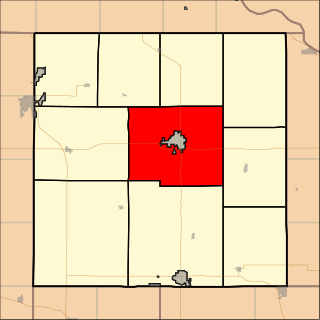
Hiawatha Township is a township in Brown County, Kansas, USA. As of the 2000 census, its population was 739.
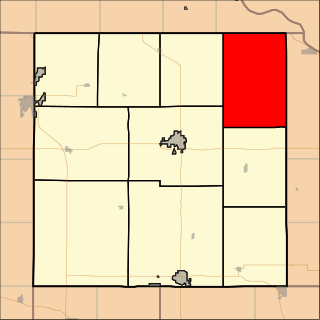
Irving Township is a township in Brown County, Kansas, USA. As of the 2000 census, its population was 311.
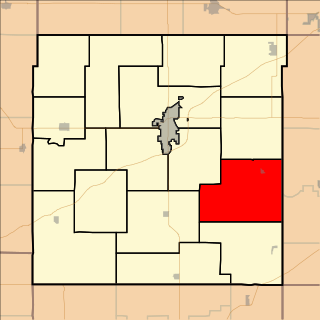
Cutler Township is a township in Franklin County, Kansas, United States. As of the 2000 census, its population was 856.
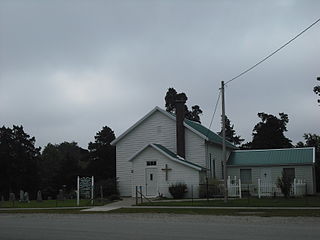
Greenwood Township is a township in Franklin County, Kansas, USA. As of the 2000 census, its population was 429. Greenwood Township contains the cemeteries of Central, Davidson, Greenwood, Hard Fish, and Keokuk.

Rural Township is a township in Jefferson County, Kansas, USA. It was formed in 1871, from the territory of Kentucky Township and Sarcoxie Township. As of the 2000 census, its population was 804.
White Rock is a ghost town in Republic County, Kansas, United States. It is located 6 miles (9.7 km) north of Courtland.

Ellen Palmer Allerton was an American poet whose inspiration probably came from her life on farms in rural New York, Wisconsin, and Kansas. She is best remembered for the poems Beautiful Things, The Trail of Forty-Nine and Walls of Corn.
Padonia is an unincorporated community in Padonia Township, Brown County, Kansas, United States.


















